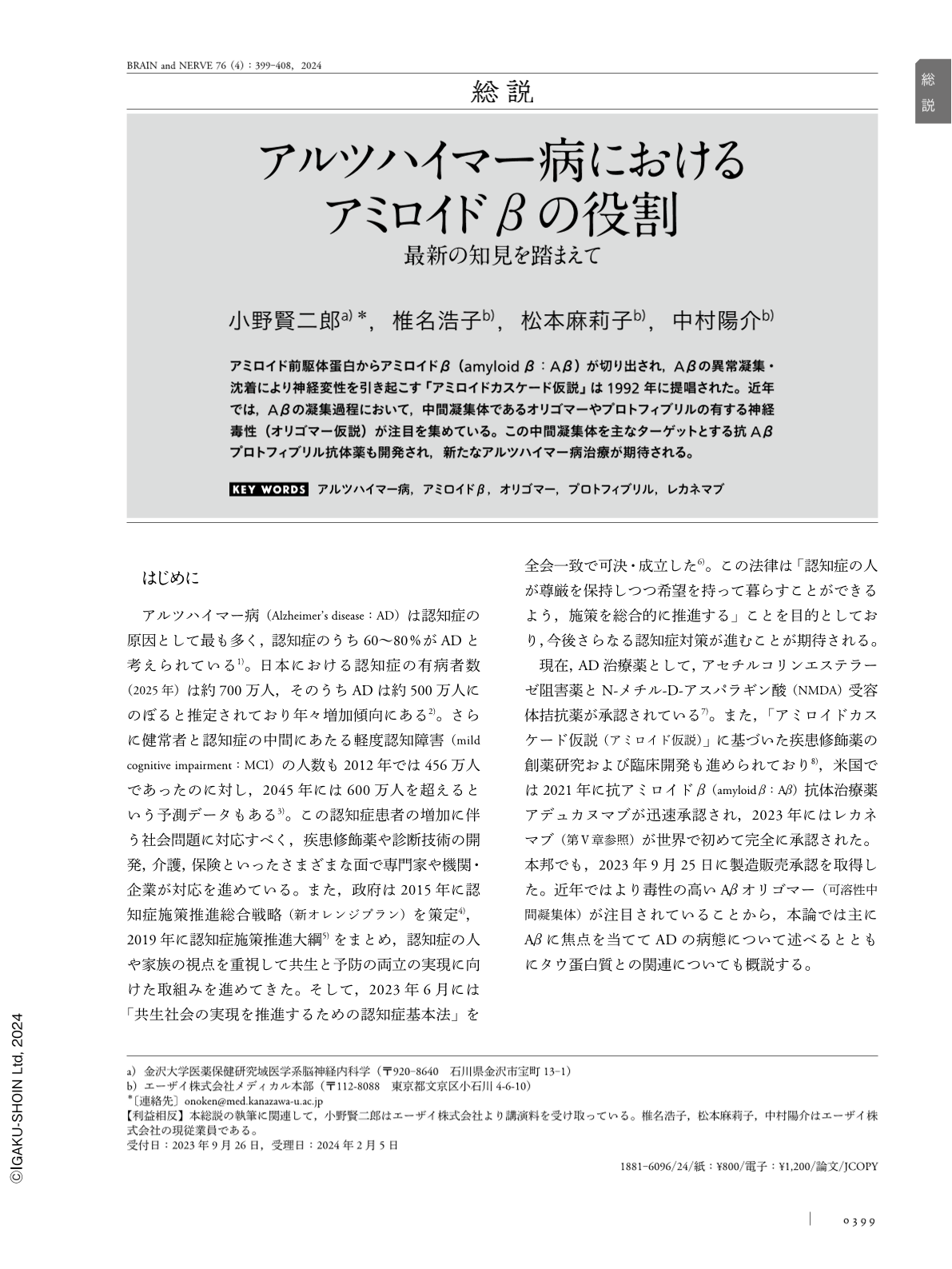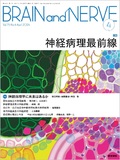Japanese
English
- 有料閲覧
- Abstract 文献概要
- 1ページ目 Look Inside
- 参考文献 Reference
アミロイド前駆体蛋白からアミロイドβ(amyloid β:Aβ)が切り出され,Aβの異常凝集・沈着により神経変性を引き起こす「アミロイドカスケード仮説」は1992年に提唱された。近年では,Aβの凝集過程において,中間凝集体であるオリゴマーやプロトフィブリルの有する神経毒性(オリゴマー仮説)が注目を集めている。この中間凝集体を主なターゲットとする抗Aβプロトフィブリル抗体薬も開発され,新たなアルツハイマー病治療が期待される。
*本論文中に掲載されている二次元コード部分をクリックすると,関連する動画を視聴することができます(公開期間:2027年4月30日まで公開)。
Abstract
The ‘amyloid hypothesis’, initially put forward in 1992, posits that amyloid β protein (Aβ) contributes to neurodegeneration through aberrant aggregation. In the process of this aberrant aggregation, Aβ forms oligomers, protofibrils, and mature fibrils, ultimately developing plaques. These mature fibrils and plaques were believed to be the culprits behind the neurotoxicity and neurodegeneration seen in Alzheimer's disease (AD). However, growing evidence in recent years has led to the ‘Aβ oligomer hypothesis’, which suggests that the intermediate forms of aggregates, such as oligomers and protofibrils, exhibit stronger neurotoxicity than the mature forms. Consequently, efforts have been made to develop anti-Aβ antibody drugs that specifically target these intermediate aggregates. Such interventions hold promise as disease-modifying treatments for AD.

Copyright © 2024, Igaku-Shoin Ltd. All rights reserved.


